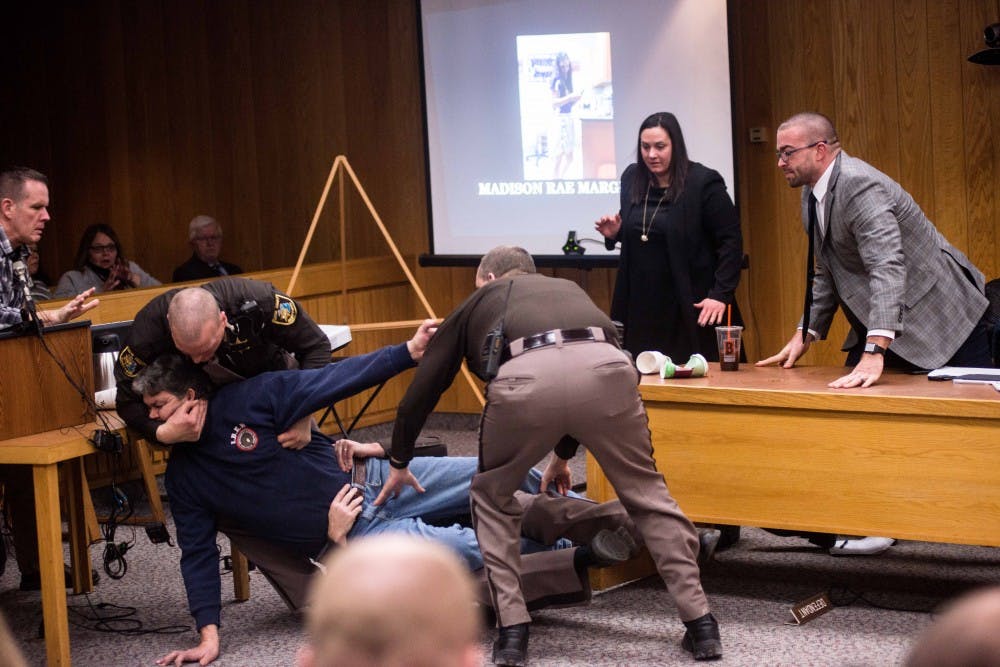I joined two of my fellow State News reporters Feb. 2, 2018 in an Eaton County courtroom. After working at The State News for a month, I attended the second day of Larry Nassar’s Eaton County sentencing. That day in court was one of the most difficult assignments I’ve shot — and still is.
Before I continue about my experience, I want to thank the survivors for standing up and delivering impact statements, continuing to speak at the Board of Trustees meetings and conducting rallies. Thank you for fighting for change. I would like to give the acknowledgment that nothing I had to deal with that day compares to the pain the survivors experienced for years, or how horribly the university has treated them.
I began working at The State News during a thrilling, horrifying and important time. Lou Anna K. Simon resigned as president, Nassar was in court and John Engler became the interim president. Thankfully, the latter is no longer true. I came to MSU in 2017 as an ignorant freshman. I knew little of what had been going on since 1997 until I began reporting on it.
Over the course of that day in court I sat tightly packed in the jury box with the other news organizations filming and taking photographs of the proceedings. As court came into session, an uncomfortable shuffle between listening intently and searching for any facial and physical expression of emotion began. Any time a tear fell, a rush of camera shutters would rip through the silence.
I have the belief that you can be empathetic towards someone and try to place yourself in that person’s shoes, but ultimately you will not know what something is like until you experience it yourself. I will never fully understand what it was like, but the sentiments of anger, horror and sadness shown are critical to understanding the situation.
Toward the beginning of the sentencing that day, a father lunged at Nassar. Initially the situation was frightening, and I trembled as I took a picture of the police officers restraining him. Although the action was dealt with, it put things into greater perspective for me. None of the rallies or speeches at Board of Trustees meetings would compare to seeing the effects of Nassar and the raw emotions first hand.
One of the base ethical questions that journalists face is how they should cover an emergency or an emotionally charged event. When a story arises we tiptoe on and over the line of someone’s privacy so the world can know what’s going on. On this occasion, I understand why the reporters were covering this case.
It’s clear Nassar caused long lasting damage and justly faced consequences. The world needed to know what he did and how the university failed. I understand the merit of taking these pictures, but that does not stop me from feeling the guilt and discomfort of photographing people in an open, emotional state. However, their emotional vulnerability was worth it. Their words put Nassar in his place — prison. I have incredible respect for the survivors delivering the impact statements and the friends and family that went up to the stand to support them.
Support student media!
Please consider donating to The State News and help fund the future of journalism.
Discussion
Share and discuss “COLUMN: Photographing Nassar ” on social media.








